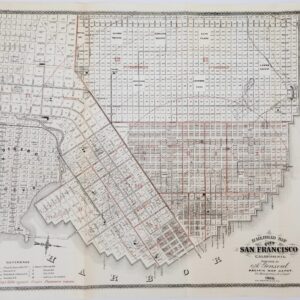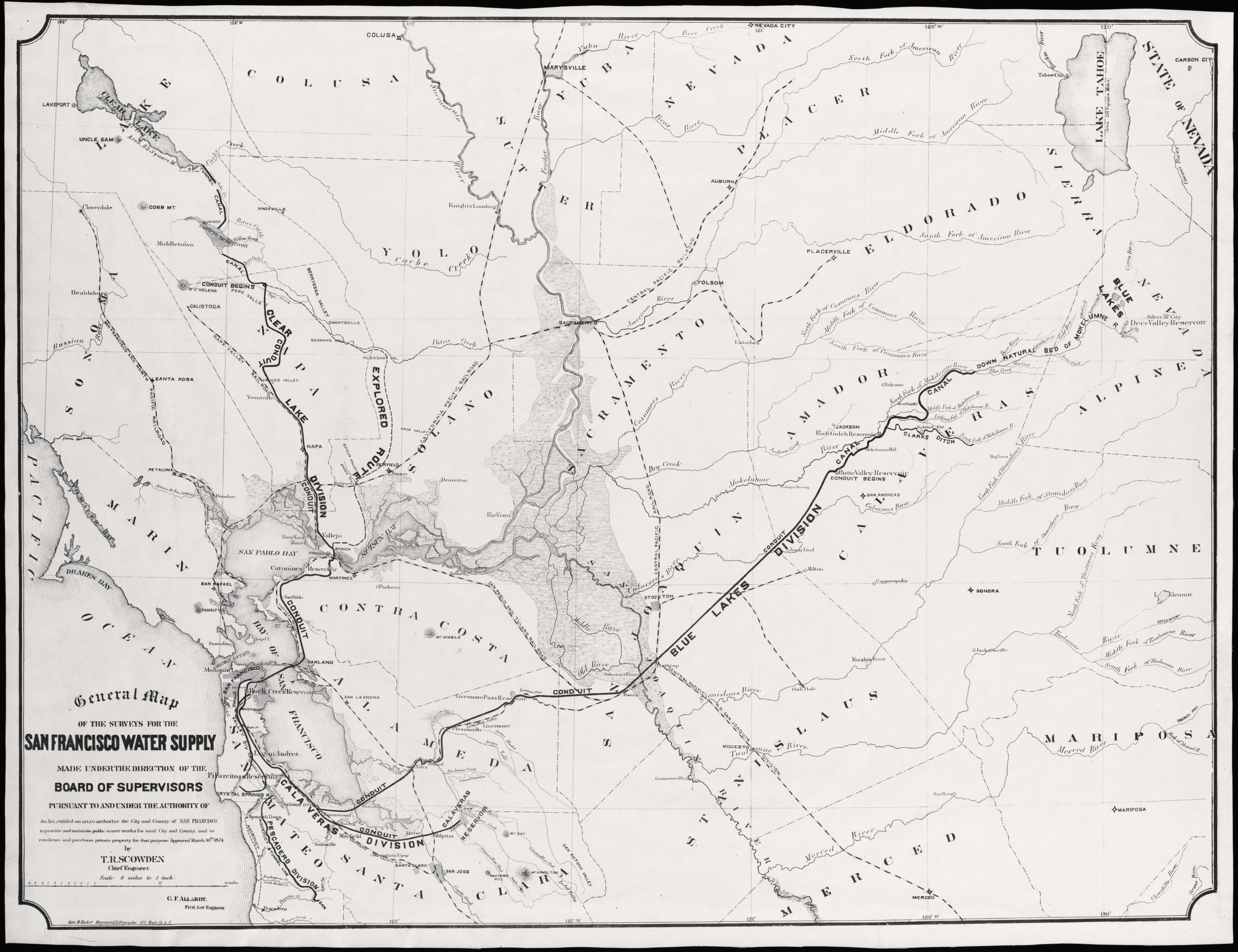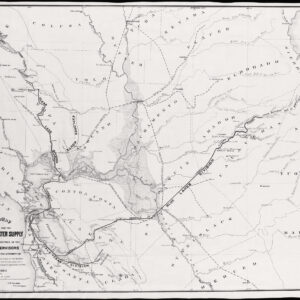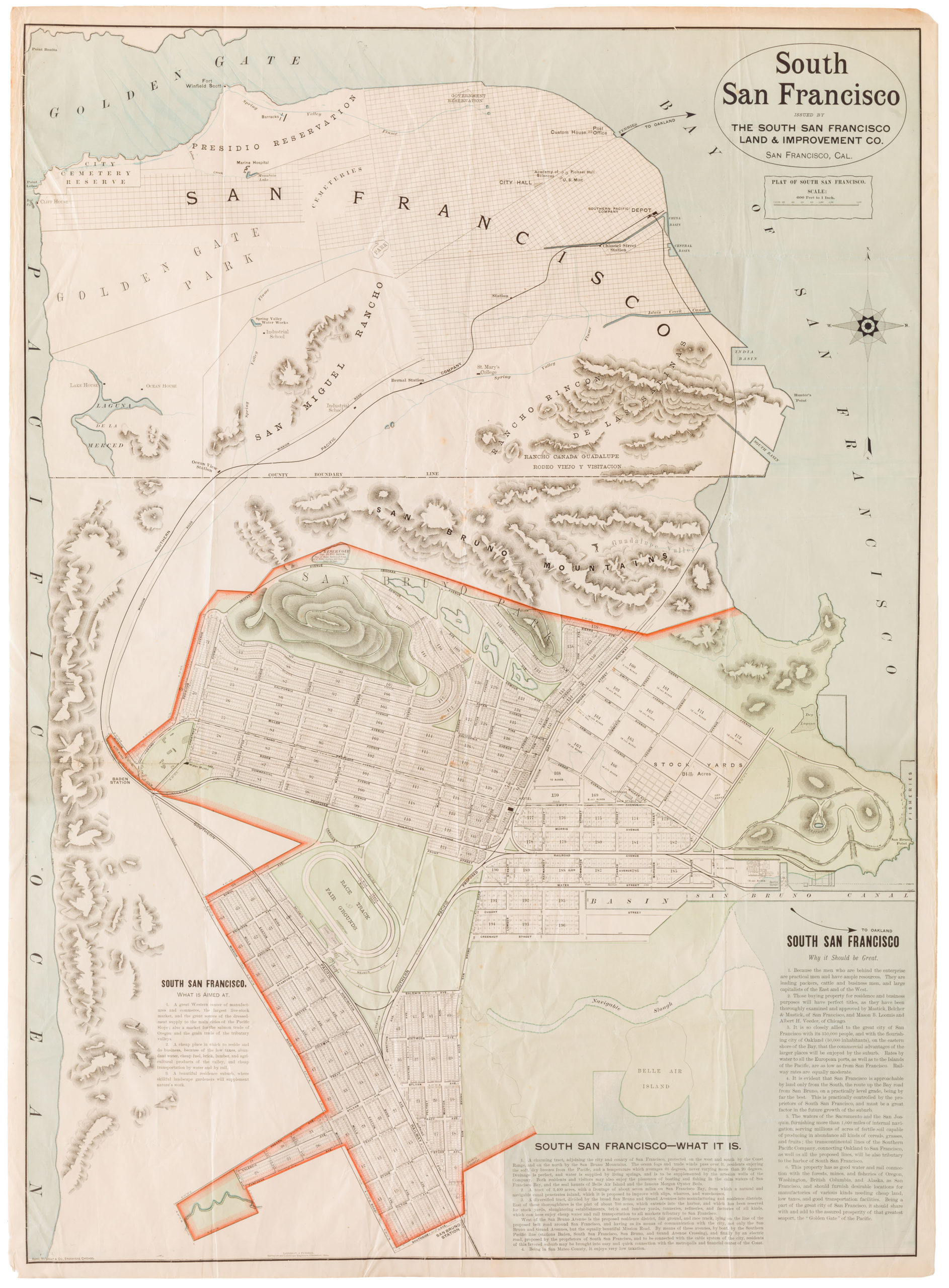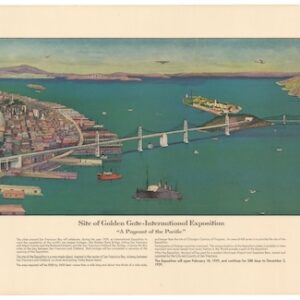1853 United States Coast Survey map of San Francisco.
City of San Francisco and its Vicinity
Out of stock
Description
This early plan of the city of San Francisco covers the region from North Point to Mission de Delores and to Point San Quentin. The city plan was derived from a number of sources, including Eddy’s official map of the city and the now rare map by Cooke and Le Count, with topography by A.F. Rodgers. The streets are clearly laid out and named with detail down to individual buildings and contour lines at 20 ft. intervals showing elevation. Buildings are shown in black along the streets in both San Francisco and Mission de Dolores, and a Plank Road connects the two communities.
A key indicates sixteen public buildings and fifteen reservoirs and numerous notes describe the soundings and navigational hazards.
Cartographer(s):
The Office of Coast Survey is the official chartmaker of the United States. Set up in 1807, it is one of the U.S. government’s oldest scientific organizations. In 1878 it was given the name of Coast and Geodetic Survey (C&GS). In 1970 it became part of the National Oceanic and Atmospheric Administration (NOAA).
The agency was established in 1807 when President Thomas Jefferson signed the document entitled “An act to provide for surveying the coasts of the United States.” While the bill’s objective was specific—to produce nautical charts—it reflected larger issues of concern to the new nation: national boundaries, commerce, and defense.
Alexander Dallas Bache, great-grandson of Benjamin Franklin, was the second Coast Survey superintendent. Bache was a physicist, scientist, and surveyor who established the first magnetic observatory and served as the first president of the National Academy of Sciences. Under Bache, Coast Survey quickly applied its resources to the Union cause during the Civil War. In addition to setting up additional lithographic presses to produce the thousands of charts required by the Navy and other vessels, Bache made a critical decision to send Coast Survey parties to work with blockading squadrons and armies in the field, producing hundreds of maps and charts.
In 1871, Congress officially expanded the Coast Survey’s responsibilities to include geodetic surveys in the interior of the country, and one of its first major projects in the interior was to survey the 39th Parallel across the entire country. Between 1874 and 1877, the Coast Survey employed the naturalist and author John Muir as a guide and artist during the survey of the 39th Parallel in the Great Basin of Nevada and Utah. To reflect its acquisition of the mission of surveying the U.S. interior and the growing role of geodesy in its operations, the U.S. Coast Survey was renamed the United States Coast and Geodetic Survey (USC&GS) in 1878.
Condition Description
Issued folding and now flattened and backed with tissue to reinforce and repair a number of small separations along the top left fold. Binding trim at lower left has been replaced with old paper with the border drawn in facsimile. Light toning and offsetting.
References
